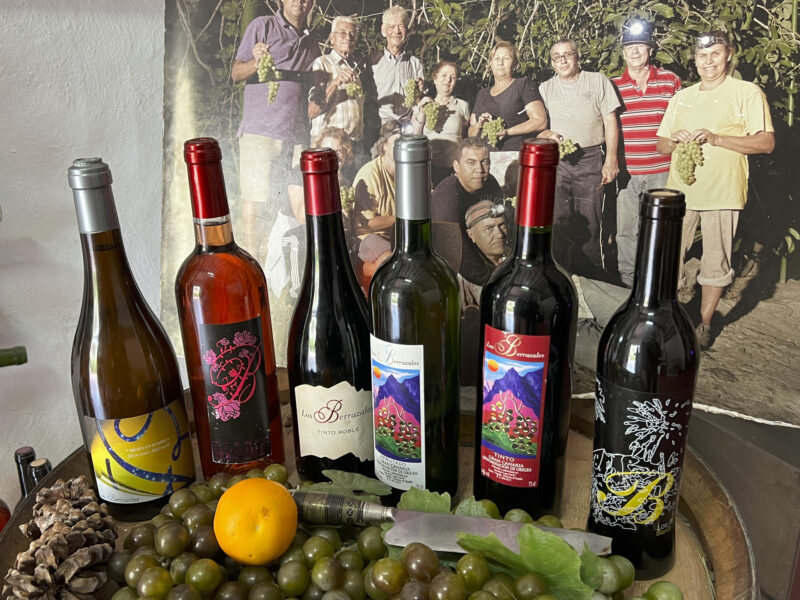Gran Canaria, an island full of flavors
Due to their unique location in the Atlantic Ocean, the Canary Islands enjoy a mild climate throughout the year. The waters around the islands are rich in fish, and the fertile volcanic soil provides an abundance of fruits, vegetables and grains. As a crossroads for Atlantic maritime traffic, Gran Canaria became a center of trade with Europe, Africa and the Americas. Goods and influences found their way to the island, making Gran Canaria an island of many flavors.
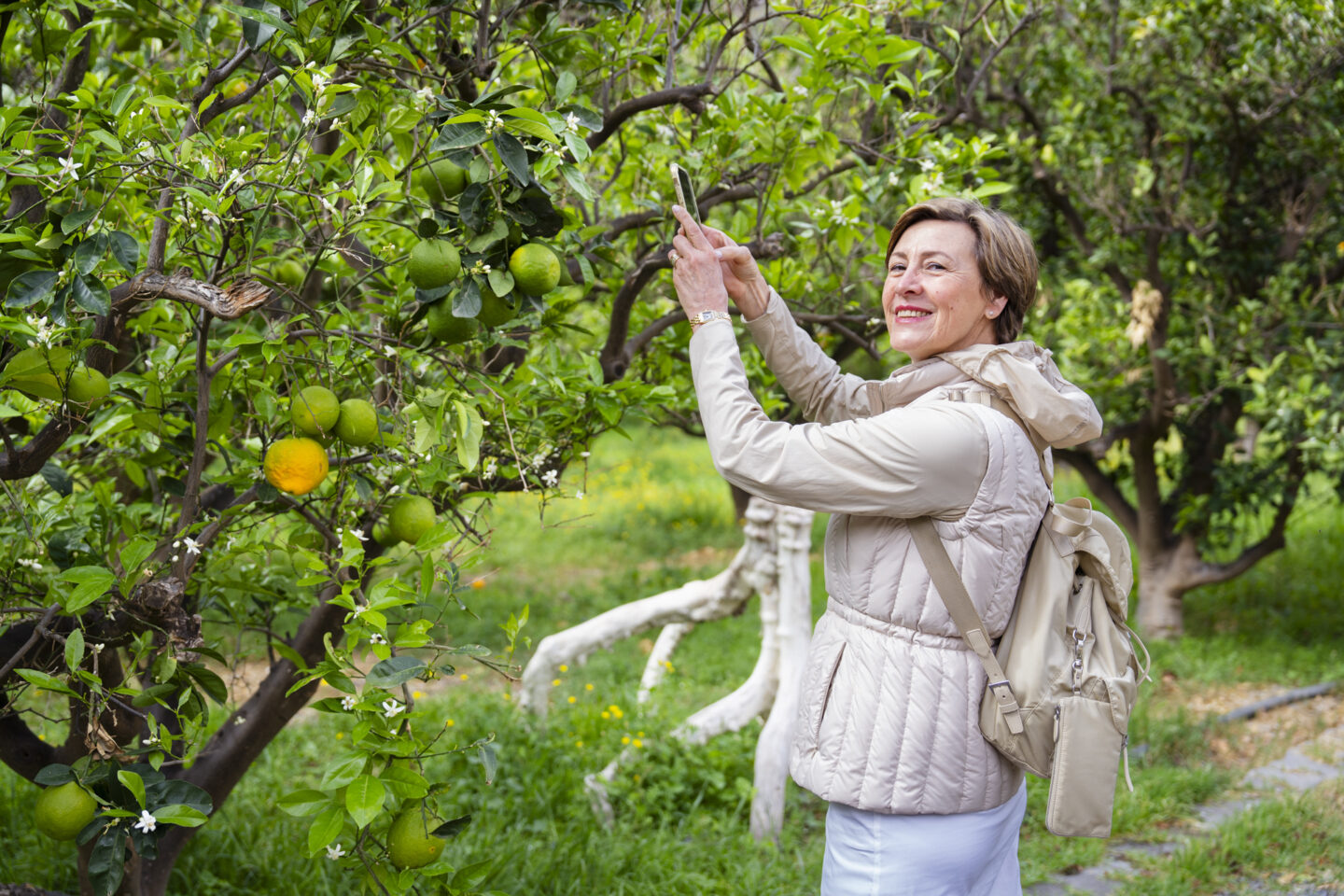
Waters full of fish
Fish and seafood are everywhere in the Canary Islands. It is one of the regions with the greatest marine biodiversity in the world. You will find more than 700 species of fish and 1,500 species of seafood, all of the best quality.
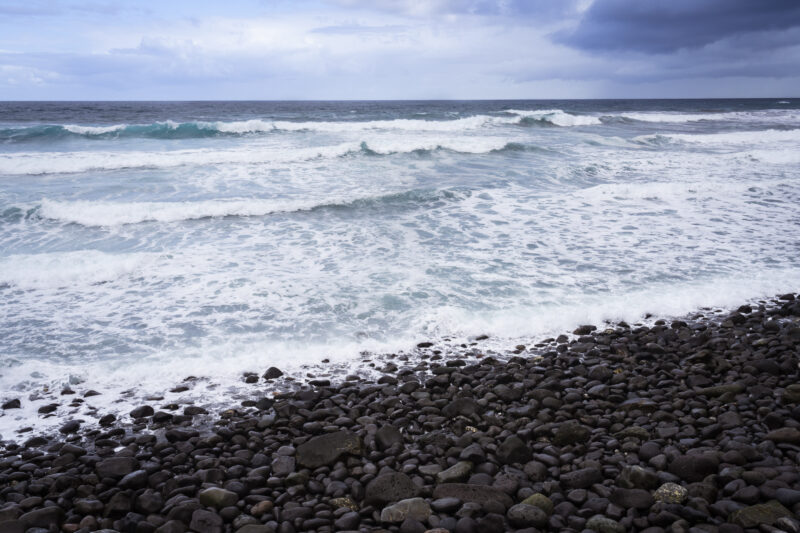
Almost every restaurant has vieja, a type of parrotfish, on the menu. The meat of this fish is white in color and has a soft and delicate flavor. It can be boiled, fried, steamed, and even dried in the sun. The fish is also made into ceviche, but it is often prepared as a kind of fish pie with onions and pickled cucumber.
Another popular fish is the sama, an endemic sea bream. The fish can weigh up to 5 kilograms and is sometimes filleted but is more commonly baked or incorporated into a stew. At the Embarcadero restaurant in Las Palmas, we had a delicious head of sama wrapped in seaweed and baked in the oven with olive oil, garlic and lemon.
Cherne or sea bass is the main ingredient in sancocho, one of the most popular dishes on the islands. The fish is prepared with both common and sweet potatoes. Sancocho is served with a traditional green or red mojo or sauce and gofio, another local dish.
In Gran Canaria, you will also lick your fingers at the deliciously steamed clams and razor clams, fried calamari rings, sweet crab, grilled prawns, tender octopus and the unique Canary lobster.
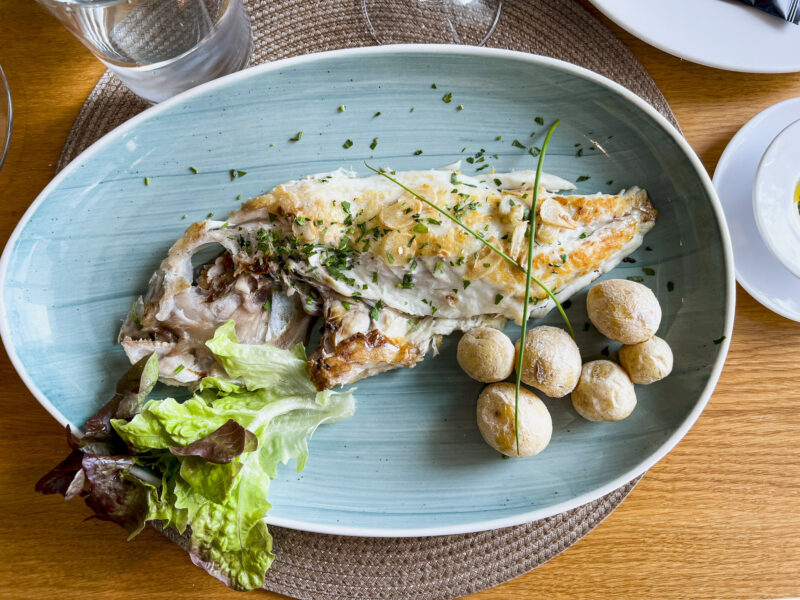
Meat from small animals
Due to the limited area, you will not find large cattle farms in the Canary Islands. Local meat comes from small animals such as goats, sheep, chickens and rabbits. Pork and beef are imported from mainland Spain. A typical dish with rabbit or goat is al salmorejo. The meat is marinated with herbs and garlic and then cooked with green peppers.
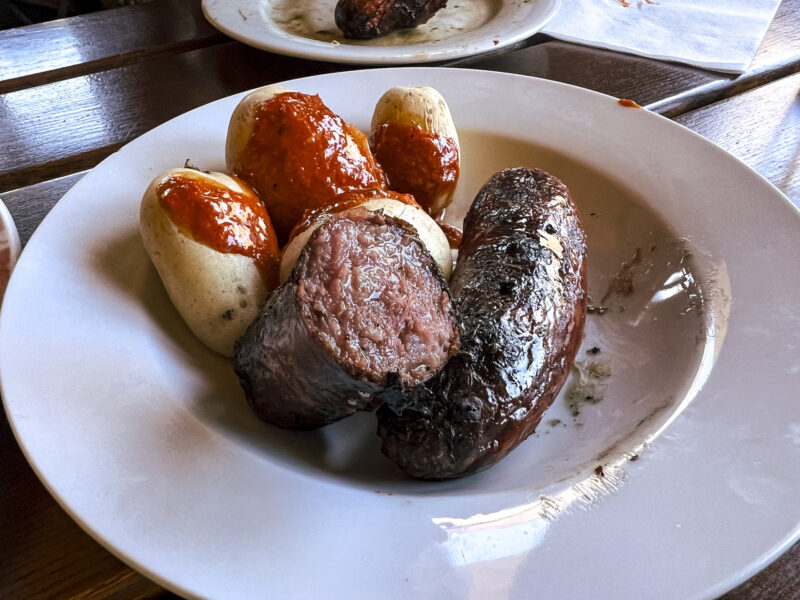
The mountain village of Teror is famous for its chorizo. Chorizo de Teror, a soft sausage made with pork, red peppers, herbs and garlic, is spread like a pâté and served with crusty bread.
Plenty of fruits and vegetables
When you go to the market, you will immediately notice the abundance of fruits and vegetables grown on the island. Beans, zucchini, lettuce, squash, cabbage, eggplant, onions, legumes, corn, avocados, mangoes, citrus, papaya and bananas are all grown and consumed locally.

Tomatoes
Canarian tomatoes are sweet, juicy and of good quality. They are grown in the huge greenhouses around La Aldea de San Nicolas and are one of Gran Canaria's main exports. You have probably eaten tomatoes from Gran Canaria without realizing it. Tomatoes are often used in stews on the island, but they are most delicious in the dish tomates aliñades, a tomato salad with olive oil, garlic and parsley.
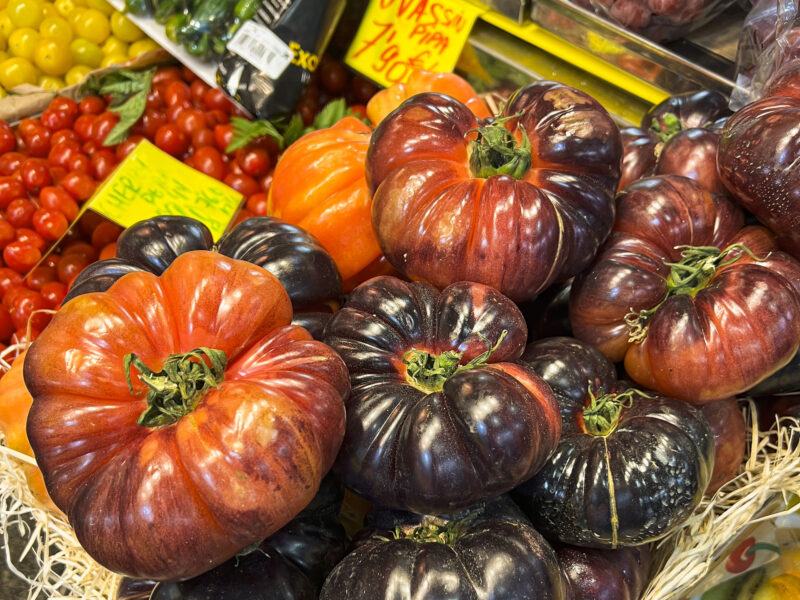
Potatoes
Potatoes were brought by the conquistadors from America and especially from Peru. They are now an integral part of the cuisine of Gran Canaria and the surrounding islands. Some varieties, such as the popular black and purple potatoes, still have the same taste as in the 16th century. Besides the common potato, the sweet potato is also a popular root vegetable.
Papas arrugadas
There is no more typical Canarian dish than papas arrugadas. This dish is made with small potatoes that are cooked with their skins in a little bit of salted water. Then they are dried over a low fire until they shrivel. The salt leaves a thin white layer on the skin. Wrinkled potatoes are eaten alone as a tapa or with meat or fish. They are always served with red and green mojo, the typical sauces of Canarian cuisine.
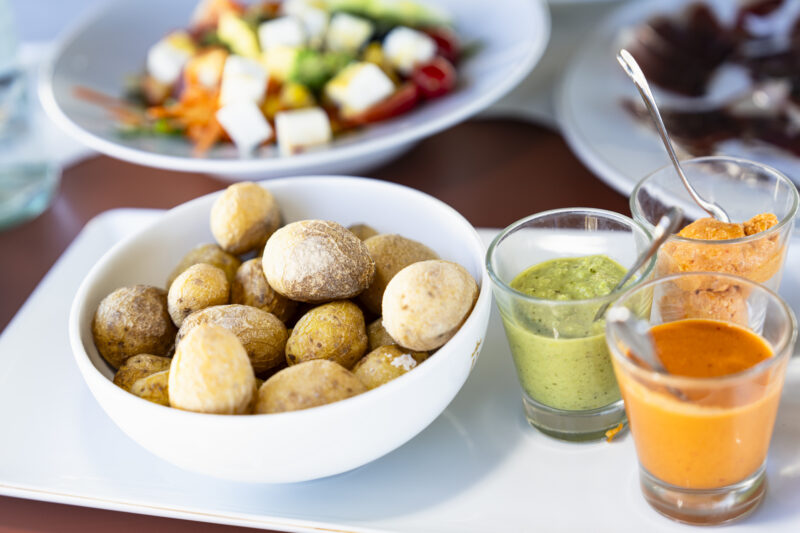
Bananas
Bananas are the main crop and are grown throughout Gran Canaria. Canarian bananas have an intense aroma and can be recognized by the typical black spots on their skin. They are the only European variety with IGP status, a guarantee of origin and quality. You can learn all about the banana at the Banana Museum at Hacienda La ReKompensa in Gran Canaria.
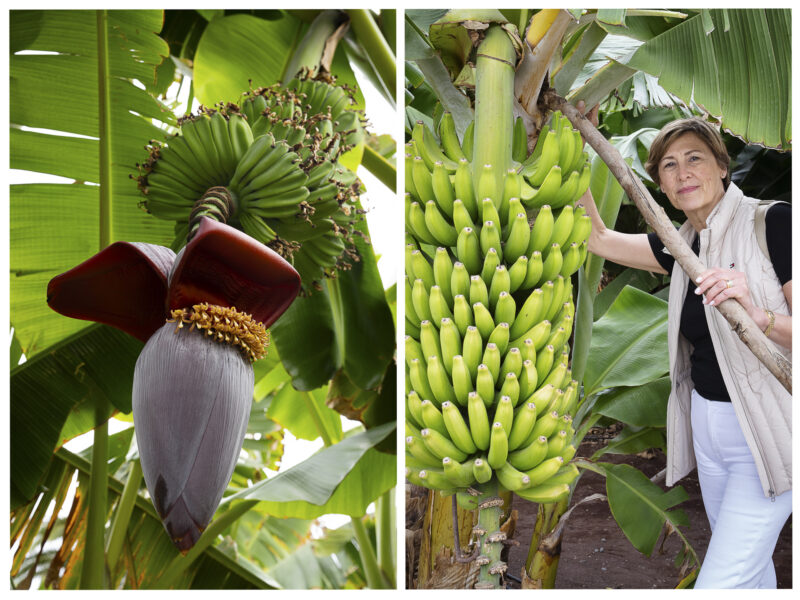
Mojo
Mojo sauces are the quintessential Canarian sauces. The basic mojo rojo and mojo verde appear on the table with every dish. Mojo is easy to prepare and there are as many varieties of mojo as there are cooks. The red sauce, mojo rojo, is made with tomatoes, chili peppers and paprika. The green variety, mojo verde, is made with oil, vinegar, garlic, cilantro and parsley.
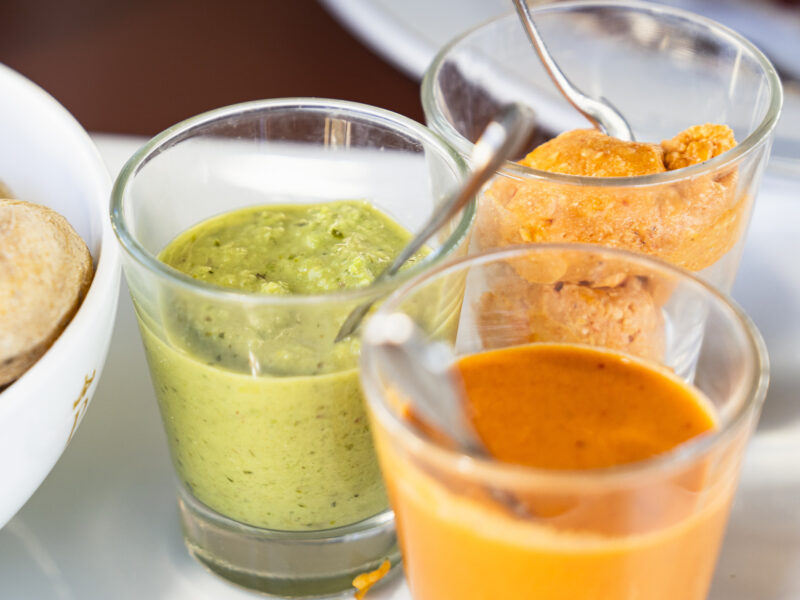
Soup, an age-old tradition
Soups are a fundamental part of the Canary Islands cuisine, which dates back to centuries of traditional recipes. They are easy to prepare and, above all, inexpensive. Watercress soup with bacon and potatoes is very popular, as is ropa vieja, a thick soup made with meat, tomatoes and chickpeas. The tastiest and most underrated soup in Gran Canaria is the rancho canario, a simple but filling dish of chickpeas, vermicelli, bacon, potatoes, chicken or meat, chorizo, tomatoes and garlic.
Gofio, an indigenous food
Gofio is a typical product of the Canary Islands, dating back to the indigenous population. Gofio is a flour made from roasted grains, usually barley but sometimes corn. This is what makes gofio unique. First, the chaff is removed from the grain with a mortar made of lava rock. The grains are toasted and then ground.
Gofio was the staple food of the indigenous population and is still part of the Canarian cuisine. Gofio can be eaten on its own, similar to polenta, but it is most commonly used to thicken sauces and soups. Gofio escaldado, for example, is a fish soup thickened with gofio. Gofio can also be used to make bread. At the restaurant Tabaiba*, we ate an innovative dessert based on gofio. Between two pressed slices of gofio was a layer of banana cream with chopped almonds. Heavenly!
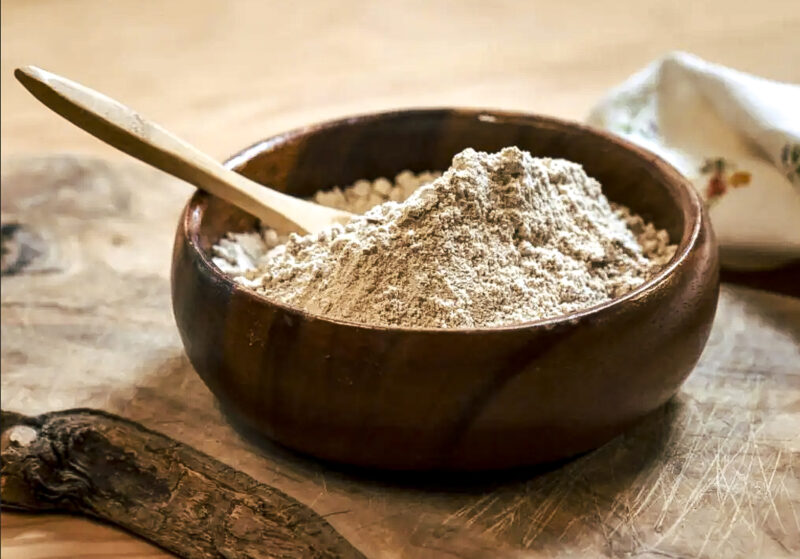
Almonds of Tejeda
February is a lovely month in Gran Canaria and especially in Tejeda, the beautiful mountain village on the Pico de las Nieves. The almond trees that adorn the mountainsides are in full bloom. The pink and white blossoms announce the beginning of spring, and the mountain villages celebrate with an almond blossom festival. The almond tree is not native to the islands. The conquistadors brought them from Spain and the nut soon found fertile soil in the Canary Islands.
Salted almonds are a must for any aperitif in the Canary Islands, but almonds are also used in desserts. Typical almond specialties are bienmesabe and mazapanes or marzipan. Bienmesabe can be translated as "tastes good to me". It is an insanely sweet and creamy dessert made with almonds, honey, eggs and lemon. Almonds are also used in truchas canarias. Truchas are delicious moon-shaped pastries filled with sweet potato, almond, lemon and cinnamon. I bought the tastiest truchas at the Cistercian convent of Teror. The nuns there bake the typical pastries and sell them on site through a small revolving hatch.
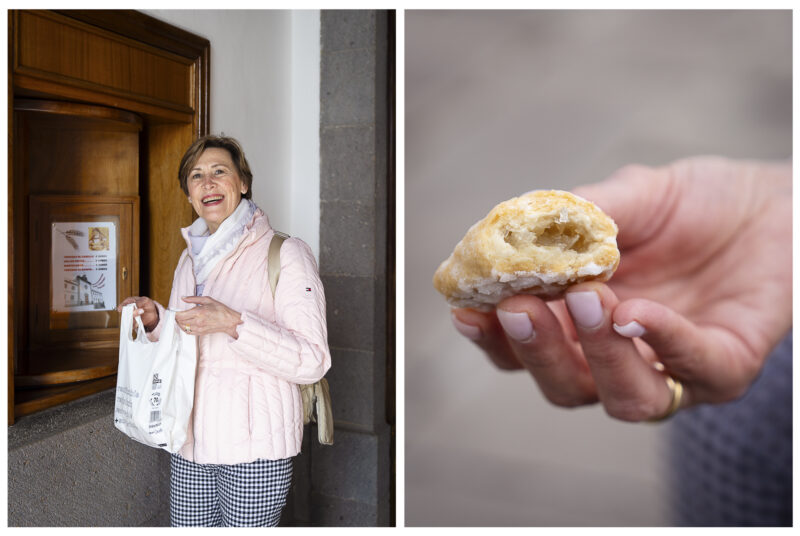
Gran Canaria's cheeses
With so many goats and sheep on the island, it is not surprising that you can find delicious cheeses in Gran Canaria. The most famous is Flor de Guía, a creamy cheese made mainly with sheep's milk and some goat or cow's milk added. The cheese is curdled with the juice of thistle flowers, which gives it a slightly bitter taste. Flor de Guía is one of the three cheeses in the Canary Islands with a Denomination of Origin.
There are many other traditional cheeses in Gran Canaria, each with its own characteristic taste and texture. For example, there is the queso tierno de Valsequillo, which has a short ripening period of seven days. For this reason, it is no longer a fresh cheese. I enjoy this cheese with avocado, tomato and olive oil.
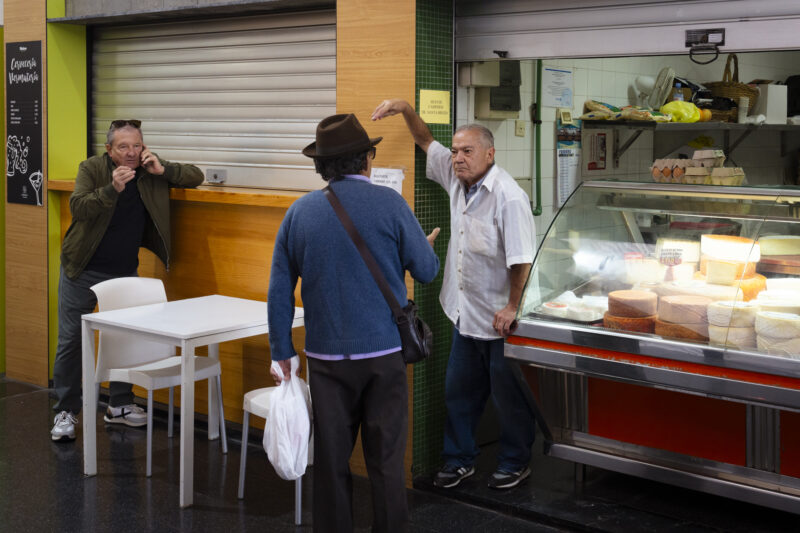
Unique wines
The wines of Gran Canaria and the other Canary Islands are unique in many ways. The combination of volcanic rock and the altitude at which they are grown, together with the maritime climate, give the wines a particularly fresh and salty character and a depth of flavor.
Free of phylloxera
The islands are one of four regions in the world that have remained free of phylloxera. Phylloxera plagued the vineyards of North America in the second half of the 19th century and made its way to Europe in the luggage of traveling botanists. The parasite devastated the vineyards of continental Europe, and many local varieties were lost. The Canary Islands were spared phylloxera, and the native grape varieties survived the devastation on the continent. They did not need to be grafted onto the resistant American strain and retained their unique characteristics.
A local wine
Grape production in the Canary Islands is limited due to the volcanic soil and the small area available. It is very unlikely that you will find Canary Islands wine in your local wine shop. Production is mainly for local consumption, so you will have to travel to one of the islands to taste the delicious wines.
Designation of Origin
Each island of the Canary Islands, with the exception of Fuerteventura, has a wine with a Denomination of Origin, the DO label. Tenerife is known for the best wines, but the other islands also do well.
DO Gran Canaria
The current DO Gran Canaria, approved in 2005, is a fusion of the unique DO Monte Lentiscal region and the former DO Gran Canaria. The white wines are made mainly with Listan Blanco and Malvasía Volcánica Seca. They are fresh, lightly aromatic wines with notes of white flowers, citrus and sometimes tropical fruits. The red wines are made mainly with Listan Negro, although Negramoll and Tintilla also give good results. The young, well-structured wines have aromas of red and black fruits, wood and spices.
